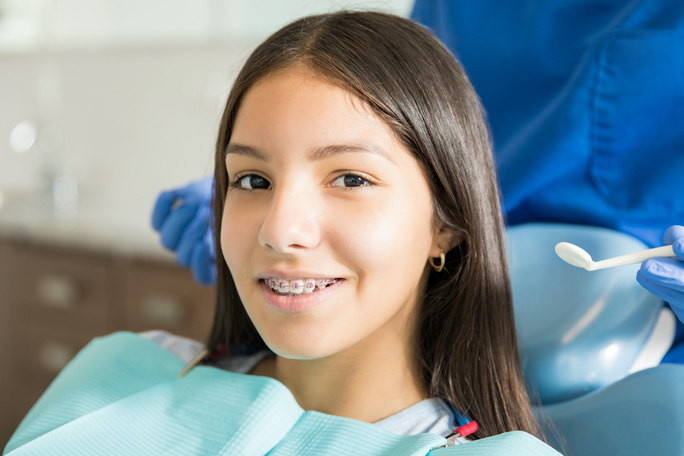It’s a question that many parents ask themselves at some point: “How do I know if my child needs braces?”
The answer is: it’s relative.
It may appear to you that your child already has the perfect smile, there may be underlying issues that aren’t obvious at first glance.
Your child should have their first orthodontic evaluation by the time they’re 7 years old. Their bodies go through a tremendous amount of change and growth during that time, including their teeth, mouth, and jaws. Many orthodontic problems will become apparent by the time your child is 7, including:
- Overcrowding: When your teeth bunch up or overlap because there isn’t enough room in your jaw for them to fit.
- Crooked teeth: Teeth that are overlapped, twisted, angled, or rotated.
- Overbite: Your upper front teeth are in front of your lower front teeth.
- Underbite: Your lower front teeth are in front of your upper front teeth.
- Protruding teeth: When your upper and lower teeth are improperly aligned, commonly called buck teeth.
You may also begin to notice some less common issues related to your child’s health which may indicate it’s time for an orthodontic visit, such as snoring at night, mouth breathing, having a slumped posture, or are sleeping poorly. If this is causing some discomfort such as a dry mouth and a sore nose, then you may want to check with your orthodontist if using nasal sprays (https://serp.co/best/natural-decongestants/) will be beneficial for their sleeping pattern.
If you start to notice any of these issues, you want to schedule an appointment with Afdent. We may not act immediately, but it’s important for us to identify concerns early and develop a treatment plan. Your dentist will also be able to detect many of the early signs of orthodontic problems and provide proper guidance.
For many years the general rule of thumb was to wait until age 12 for most children to get braces, when they have lost all their baby teeth. The idea was that a treatment course would be more predictable since all adult teeth have erupted.
Today, we’re more aware that orthodontic issues in children can be signs that there are development issues with upper and lower jaws. These problems can lead to posture issues with a child’s face, airway, and spine. Your orthodontist may recommend two-phase treatment during different developmental stages in your child’s life to correct dental issues before your child’s adult teeth erupt.
Likely, your Afdent orthodontic professional will want to wait until your child loses their baby teeth and develops most of their adult teeth before recommending braces. But each child is different, so this could be anytime between ages 8 and 14.
There isn’t a singular magic tell-all for how old your child should be before they get braces. It requires careful observation from you, the parent, and your dentist as well as continuing conversations with your orthodontist from a young age. Early intervention can give your child a stunning smile which lasts a lifetime.
If you’re concerned that you or your child may need braces, please contact Afdent to request a no-cost consultation.


